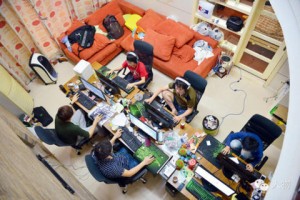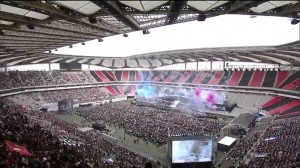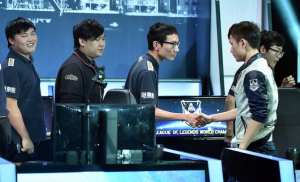Following up from my previous post, it is important to address some of the key factors which make Esports what it is to us today – a thriving, competitive industry that everyone wants to be a part of. For starters, anyone can play AND watch the game (the AND is crucial because it allows viewers to relate professional performance to their own endeavors in-game). This is also important due to the fact that Esport games often receive ‘patches’, which are updates which occur every couple of weeks and months, changing the overall style and game-play aspects for each individual game which doesn’t allow a game to stagnate. This is very different from traditional sports – whilst sports like soccer are only known to be played in certain places (eg. a field) and with the same set of rules and guidelines, the fact that a game such as League of Legends is changing all the time forces players to adapt to the changes made every ‘patch’, which gets both the professional and casual scene thinking of new ways to play a game.
Two more important aspects are that the games are usually free (to play), and that their development as well as the professional gaming scene are largely controlled by the game developers. For example, Riot Games (the creator of League of Legends) is responsible for providing the game to the public for free as well as managing professional competitions and tournaments (such as the OnGamenet Champions in Korea and the League Championship Series in North America/Europe). This could be seen as ‘going direct’ – Riot Games does not provide the game through third party organizations and is thus fully responsible for the success of it. Riot generates money not only through the professional scene, but also due to the fact that any player can use real money to buy enhanced ‘features’ in the game, which do not change the overall game-play aspect, but allows players to CUSTOMIZE their game-play style. Much like customizing a pair of shoes, this allows players to stay loyal to the game – as they know that Riot will often produce a high quality feature which addresses their needs and wants.
With a final outlook on the idea of streaming (mentioned last post about Amazon acquiring Twitch for $1.1 billion), one would definitely consider the question of whether a platform would be worth so much money. The fact is, being streaming platforms, websites such as Twitch and Azubu consistently show advertisements on streams. If a popular player gathers many viewers, and many viewers view an advertisement, this is exactly how these players earn revenue. According to a recent study, one of the most popular players in China (former World Elite player ‘Caomei’) earns up to $800,000 a year JUST by streaming.
Additional Sources (to last post’s blog)
Ongamers





